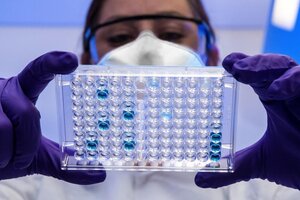Dra. Cristina Canal, Action Chair to coordinate European activity in Therapeutical applications of Cold Plasma
Dr. Cristina Canal (IRSJD) coordinates the "PlasTHER COST Action", a network that aims to promote the development of cold plasma in Europe, to carry out the research carried out to date on patients.
COST Action Therapeutical application of Cold Plasma (PlasTHER) aims at establishing a synergistic network that articulates researchers, the medical community, industry, or patient associations, among others, and coordinate the European activity in this domain to foster the leadership of Europe in emerging field of plasma medicine. To do so, four axes have been set, focusing on the basic scientific fundamentals, as well in the application and translation of the therapy.
- The Creation of a strongly interdisciplinary research network breaking the classical research field borders.
- Sharing the latest advances in the basic mechanisms regarding the action of plasmas, associated to the most suitable CAP devices and operational conditions for efficient therapies.
- Generation of harmonized protocols within the community in the different therapeutic areas involved, and definition of a roadmap for each of them.
- Broad dissemination of the results to all stakeholders.
In September 2021, the COST Action PlasTHER, set up its collaborative network of specialists designed to coordinate European activity in this domain and promote the development of a coherent European research programme. This pluri-disciplinary network integrates experts in physics, chemistry, biology, engineering, and medical doctors from 24 countries, coming from various sectors in academia, businesses, and healthcare.
The research has strong interest in shedding light on the role of plasma technology and the utilization as standardized therapeutics in several biomedical applications of great importance to society: antimicrobial potential, skin treatment and cancer therapy. In this regard, the intensification of research in the last 5 years in different areas of Plasma Medicine - particularly sterilization and decontamination, wound healing, and cancer treatment - urgently requires the harmonization of protocols, and the gathering the knowledge generated in a common direction to allow all the efforts and public investment done up to now in basic and applied science to be translated into benefits for the society and the healthcare system.
For the next few years, PlasTHER COST Action will explore the unprecedented possibilities of atmospheric pressure plasmas in medicine to share, develop and consolidate suitable therapies currently under investigation to make Europe's science and healthcare world leaders in this field.
What are Cold Atmospheric Plasmas (CAPs)?
Cold Atmospheric Plasmas (CAPs) have emerged as a powerful technique involving a vast number of reactive species (molecules, atoms, ions, electrons, photons, UV & visible radiation) which have demonstrated to affect cells through complex biochemical procedures, opening a great window of opportunity in the novel area known as Plasma Medicine.
Although plasma medicine has been established as a promising approach in the medical field, many challenges still threaten this promising field to move forward, such as clarification of the mechanisms involved in the therapeutic action of plasmas and plasma-conditioned liquids, insufficient standardization, or an urgent need for enhanced dialogue and interaction between scientists (plasma experts, biologists), medical doctors or industry among others.
Reference

Thanks to the PlasTHER COST Action we will be able to push the development of the field forward in Europe, to bring the excellent research made up to date to the bench side for the benefit of the patients.
